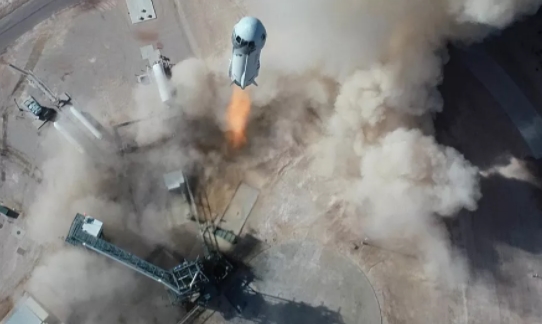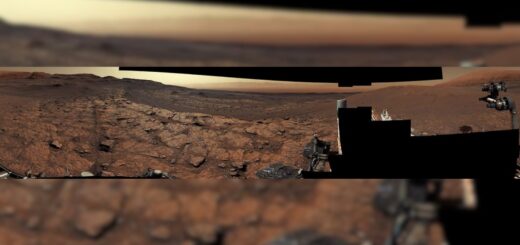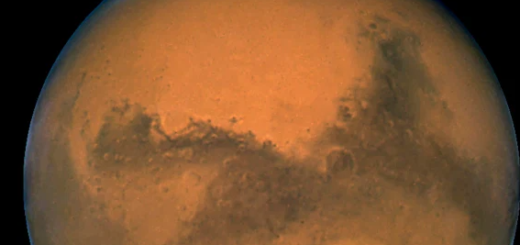Blue Origin will simulate moon gravity on rocket launches for NASA

Blue Origin plans to deliver moon gravity-style missions on spaceflights much closer to Earth.
Starting in 2022, the company plans to meet a long-standing need to simulate lunar gravity — that would be one-sixth that of Earth’s — for larger payloads and for longer periods of time than the current options. Blue Origin will modify its suborbital New Shepard spacecraft to act like a large centrifuge in Earth orbit, gently offering a lunar-like push on the experiments inside the spacecraft.
Experiments requiring moonlike conditions usually require a parabolic flight — which only offers a few seconds of lunar gravity at a time — or a centrifuge, which is limited by size, according to a NASA statement. Blue Origin, however, will use its reaction control system to offer lunar gravity for at least two minutes at a time.
“NASA will soon have more options for testing those innovations in lunar gravity thanks to a collaboration with Blue Origin to bring new testing capabilities to the company’s New Shepard reusable suborbital rocket system,” NASA added in the statement.
NASA wants to simulate lunar gravity on Blue Origin’s flights in order to prepare for actual missions to the moon by astronauts in the near future. The Artemis program received a renewed commitment from the Biden administration when it took office this year, although there is no word yet that the Trump-era 2024 deadline will be upheld. The point is, however, that the moon remains NASA’s next major human exploration target — and they’ll want to get technologies ready for that challenging environment.
“NASA is pleased to be among the first customers to take advantage of this new capability,” Christopher Baker, program executive for the flight opportunities program at NASA headquarters in Washington, added in the same statement.
A view of Earth from inside Blue Origin New Shepard capsule during its suborbital NS-14 mission from West Texas on Jan. 14, 2021. Blue Origin’s Mannequin Skywalker test dummy is visible at the window.
A view of Earth from inside Blue Origin New Shepard capsule during its suborbital NS-14 mission from West Texas on Jan. 14, 2021. Blue Origin’s Mannequin Skywalker test dummy is visible at the window. (Image credit: Blue Origin)
Possible technologies to be tested could include mining the moon’s regolith (or soil), living off water or other resources on the moon (called in-situ resource utilization), or getting environmental control and life support systems ready for astronauts, Baker added. “Many systems designed for use on Earth simply do not work the same elsewhere,” he said.
Companies wishing to participate in the New Shepard flights may join through NASA’s flight opportunities program, whose website is here. A certain number of technologies are selected each year for testing aboard one of several NASA-funded vehicle options.
Separate to these flight testing options, Blue Origin does hope to land on the moon itself eventually. In 2019, the company revealed a lunar lander design called “Blue Moon,” meant to participate under NASA’s Commercial Lunar Services Program (CLPS) for companies. Blue Origin is eligible for CLPS opportunities, but has not received a contracted mission yet.



 Creators of mankind
Creators of mankind Description of “Tall white aliens”
Description of “Tall white aliens” Where they came from?
Where they came from? About hostile civilizations
About hostile civilizations The war for the Earth
The war for the Earth “Tall white aliens” about eternal life
“Tall white aliens” about eternal life Video: “Nordic aliens”
Video: “Nordic aliens” Aliens
Aliens Alien encounters
Alien encounters The aliens base
The aliens base UFO
UFO Technology UFO
Technology UFO Underground civilization
Underground civilization Ancient alien artifacts
Ancient alien artifacts Military and UFO
Military and UFO Mysteries and hypotheses
Mysteries and hypotheses Scientific facts
Scientific facts


















